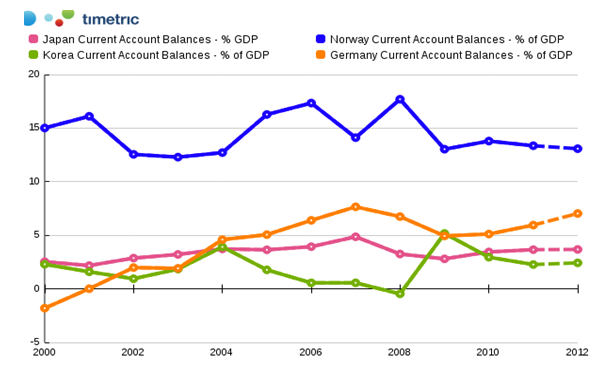Measuring Balance of Payments
Post on: 16 Март, 2015 No Comment

Measuring Balance of Payments
How, then, do we measure ‘balance’ or ‘imbalance’ in the balance of payments?
Surpluses and deficits are defined in terms of certain groupings of items.
They are segregated from the main body of the balance of payments in order to reflect net movements of financial assets and liabilities having a sufficient degree of liquidity to be regarded as means of international payment.
That is, in order to reflect changes in the net foreign liquidity of a country.
To identify such changes, it is convenient once again to distinguish analytically between two types of transactions in the balance of payments: this time, between autonomous transactions, which are undertaken for their own sake, for the profit they entail or the satisfaction they yield.
Accommodating transactions, which are not undertaken for their own sake, but rather have their source in other (autonomous) transactions elsewhere in the balance of payments.
Autonomous transactions arise from the fundamental differences between countries in prices, incomes, interest rates, tastes, and so forth.
Accommodating transactions are the residual money flows (including flows of official reserves) that occur to fill any gaps left by autonomous transactions.
Accommodating transactions reflect increases or decreases of the net foreign liquidity of a country. They are, therefore, the best measure of surplus or deficit in the balance of payments.
A deficit appears in the balance of payments when autonomous transactions requiring money payments exceed autonomous transactions involving money receipts.
The deficit means that the country is losing net liquidity to others: it is running down its liquid foreign assets (including official reserve assets) and/or accumulating liquid foreign liabilities.
Conversely, a surplus exists when autonomous money receipts exceed autonomous money payments.
It follows that surpluses and deficits could be easily identified if we could simply place all autonomous transactions inside the main body of the balance of payments (‘above the line’) and all accommodating transactions outside it (‘below the line’).
But the process of measuring ‘balance’— of drawing the ‘line’— is not nearly so simple. The empirical difficulties associated with it are enormous. There is no unique, ‘right’ statistical measure of balance.
There are only observed measures that more or less closely approximate the precise analytical distinction between autonomous and accommodating transactions.
Different countries use different measures of balance. Most may be classified into two broad categories that shade into one another.
One category is the basic balance, which places only current account transactions and long-term capital movements ‘above the line'; these are supposed to comprise the autonomous transactions that determine the basic course of the balance of payments.
The other category is the official settlements balance, which places everything ‘above the line’ but official reserve transactions.
These, reflecting official intervention in the foreign exchange market, are alone assumed to represent accommodating flows.
Unfortunately, neither of these categories is free of deficits; as approximations of the analytical distinction between autonomous and accommodating transactions, both are artificial constructs.
For this reason, the accounting balance of payments is, by itself, not really a sufficient information base for formulating and conducting governmental policy.














